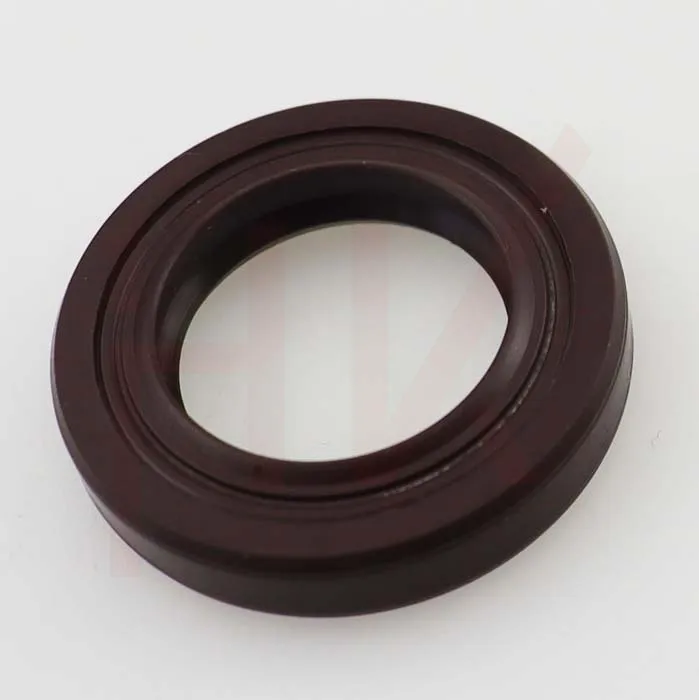جون . 03, 2025 02:02 Back to list
High-Performance Hydraulic Shaft Seals Leak-Proof & Durable Solutions
- Fundamental operating principles of fluid sealing technology
- Key technical specifications and pressure resistance thresholds
- Comparative advantages over traditional sealing solutions
- Leading manufacturer specifications and performance data
- Engineering approaches to customized configuration
- Documented case studies from challenging industrial environments
- Maintenance protocols for extended operational lifespan

(hydraulic shaft seal)
Understanding Hydraulic Shaft Seal Fundamentals
Hydraulic shaft seals function as critical barriers maintaining pressure integrity in dynamic applications by sealing the space between moving components and housing structures. The fundamental operating principle involves creating controlled radial force at the sealing interface, allowing shaft rotation while containing pressurized fluids. Different seal categories exist: primary hydraulic shaft seal
s bear direct pressure contact, while secondary shaft wiper seals prevent external contamination ingress. Precision-tolerance machining proves vital for optimal performance - industry data shows proper surface finishes below 10 microinches significantly extend service life.
Critical Performance Metrics
High pressure hydraulic shaft seals withstand operational extremes exceeding 6,000 psi in modern hydraulic systems. Temperature performance spans industrial applications ranging from -65°F in arctic equipment to +300°F in foundry machinery. Seal materials demonstrate markedly different performance characteristics:
- Polyurethane compounds deliver superior abrasion resistance at pressures below 5,000 psi
- Radial-load reinforced PTFE handles temperatures beyond standard polymers
- Spring-energized configurations maintain consistency beyond 10 million reciprocating cycles
Independent tests by the Fluid Power Institute show premium seals reduce leakage by 72% compared to economy seals after 500 operating hours at 3,000 psi.
Technical Advantages Over Conventional Solutions
Modern composite materials outperform traditional rubber seals in extreme conditions. Recent advancements integrate proprietary lubrication channels within the seal structure to minimize friction coefficients. Laboratory results demonstrate a remarkable 35°F temperature reduction at the dynamic interface compared to traditional designs. For rotating applications, hydrodynamic wave patterns actively generate lubricating layers at velocities exceeding 3.2 m/s.
Manufacturer Capability Comparison
| Manufacturer | Pressure Rating | Material Technology | Service Life (hours) | Extreme Temp Range |
|---|---|---|---|---|
| PrecisionSeal Systems | 7200 psi | Hydro-Laminate™ PTFE | 8,200 | -76°F to +428°F |
| PowerSeal International | 6300 psi | Thermo-Resilient PU | 6,800 | -40°F to +347°F |
| ElastoDyn Solutions | 5800 psi | Hybrid Nitrile-Polyurethane | 5,300 | -22°F to +302°F |
Recent field studies revealed PrecisionSeal's proprietary Hydro-Laminate™ PTFE compound withstands high-pressure hydraulic shaft sealing environments for 40% longer duration before extrusion damage occurs.
Custom Engineering Solutions
Bespoke sealing solutions address unique challenges such as shaft misalignment exceeding 0.75°, extreme chemical exposure, or FDA-compliant applications. For specialized offshore drilling equipment, manufacturers now integrate tandem hydraulic shaft seals with integrated pressure staging chambers that progressively dissipate pressure across multiple sealing barriers. Such configurations maintain functionality at depths exceeding 12,000 feet. Recent satellite-mining applications demanded shaft wiper seals capable of operating in lunar regolith environments requiring specialized material formulations.
Industrial Application Case Studies
Documented results from steel extrusion presses demonstrate the tangible benefits of advanced sealing solutions. Implementing reinforced hydraulic shaft seals at Alabama RollWorks decreased hydraulic fluid consumption by 14.7 quarts per operational day across twelve presses. For mobile hydraulic applications, tracked forestry harvesters using performance-tuned shaft wiper seals operated 53% longer between maintenance intervals in high-debris environments. Power generation facilities documented a $380,000 annual reduction in maintenance costs after switching to high-temperature compound seals across turbine hydraulic controls.
Maintaining Hydraulic Shaft Seal Integrity
Preventative maintenance protocols significantly extend the functional lifespan of hydraulic shaft seals. Current industry recommendations include:
- Monthly surface inspections to identify minute nicks causing abrasive damage progression
- Temperature verification at sealing interfaces using infrared thermography
- Fluid purity checks ensuring particulate levels remain below 10 microns
Proper installation techniques prevent over 50% of premature failures according to Fluid Sealing Association data. Monitoring seal functionality with pressure decay testing provides early detection of issues developing in critical high-pressure hydraulic shaft applications.

(hydraulic shaft seal)
FAQS on hydraulic shaft seal
What is the primary function of a hydraulic shaft seal?
Q: What is the primary function of a hydraulic shaft seal?
A: A hydraulic shaft seal prevents fluid leakage, maintains system pressure, and blocks contaminants from entering hydraulic systems. It ensures efficient operation by sealing the rotating shaft and housing interface.
How do high-pressure hydraulic shaft seals differ from standard seals?
Q: How do high-pressure hydraulic shaft seals differ from standard seals?
A: High-pressure hydraulic shaft seals are reinforced with robust materials like PTFE or polyurethane and feature advanced designs to withstand extreme pressures. They often include anti-extrusion rings to prevent seal failure under stress.
Why are shaft wiper seals important in hydraulic equipment?
Q: Why are shaft wiper seals important in hydraulic equipment?
A: Shaft wiper seals remove dirt, moisture, and debris from the shaft surface before retraction into the system. This protects internal components from contamination and extends the lifespan of primary seals.
What materials are best for high-pressure hydraulic shaft seals?
Q: What materials are best for high-pressure hydraulic shaft seals?
A: Materials like thermoplastic polyurethane (TPU) and PTFE are ideal for high-pressure applications due to their durability and resistance to extrusion. They also handle temperature fluctuations and aggressive hydraulic fluids effectively.
Can shaft wiper seals be used alongside other hydraulic seals?
Q: Can shaft wiper seals be used alongside other hydraulic seals?
A: Yes, shaft wiper seals are often paired with primary hydraulic shaft seals for dual protection. They act as a first line of defense against external contaminants, enhancing overall system reliability.
-
TCN Oil Seal Metal Ring Reinforcement for Heavy Machinery
NewsJul.25,2025
-
Rotary Lip Seal Spring-Loaded Design for High-Speed Applications
NewsJul.25,2025
-
Hydraulic Cylinder Seals Polyurethane Material for High-Impact Jobs
NewsJul.25,2025
-
High Pressure Oil Seal Polyurethane Coating Wear Resistance
NewsJul.25,2025
-
Dust Proof Seal Double Lip Design for Construction Equipment
NewsJul.25,2025
-
Hub Seal Polyurethane Wear Resistance in Agricultural Vehicles
NewsJul.25,2025
-
The Trans-formative Journey of Wheel Hub Oil Seals
NewsJun.06,2025
Products categories
















